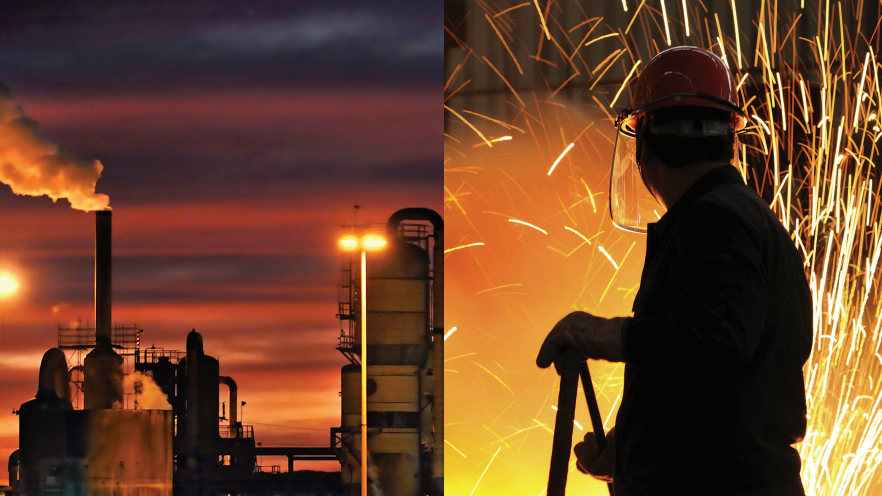Harness the Heat to Save Money and Improve Resiliency

Manufacturing and power generation create large amounts of heat that typically escapes through smokestacks into the air. The available and proven technology commonly known as combined heat and power, can be deployed by manufacturers, power plants, and institutional campuses to capture this energy and use it to heat buildings or generate more electricity cheaply and reliably. Simply put, improving industrial efficiency means more power can be gained from natural gas, coal, and other fuel sources.
Benefits for the industrial and manufacturing sectors
Greater energy efficiency for the industrial and manufacturing sectors will:
- Create new American jobs. Oak Ridge National Laboratory estimates up to 1 million, highly skilled jobs could be created.
- Save money. With rising energy prices affecting companies of all sizes, harnessing heat that would otherwise be wasted can reduce power bills, giving businesses the flexibility to invest that money elsewhere.
- Stop wasting energy and improve resiliency. Users of combined heat and power systems can be more self-sufficient, even if the power goes out.
Distributed power generation increases resiliency
Generating power where it is used—also known as distributed power—protects businesses and institutions from unexpected power outages caused by natural disasters and other disruptions. A combined heat and power system, with the ability to operate independently from the grid—also known as “island-ability”—can maintain power even when the grid is down, ensuring that a facility stays productive.
Increasing U.S. industrial energy efficiency can produce more power from natural gas, coal, landfill gas, and biomass with less waste. This also reduces pressure on the commercial electricity grid, making it more reliable. Getting more energy from the same amount of fuel also helps communities avoid the need to build new power plants at an additional cost to ratepayers.
Access to financing is needed to increase industrial energy efficiency
Technologies that harness heat are at work in every state. Altogether, utilizing such power contributes 85 gigawatts of electricity capacity annually, or almost 12 percent of the nation's electricity generation.
The United States could double that amount with the help of improved access to the investment tax credit, which currently is limited in size and scope to only certain types of industrial efficiency projects. With small modifications to the existing investment tax credit such as removing restrictions and setting flexible incentives, more U.S. companies could install these systems, making some of the largest energy users and power generators more efficient, productive, and competitive.
Industrial Efficiency Organizations:
- Alliance for Industrial Efficiency
- Alliance to Save Energy
- American Council for an Energy-Efficient Economy
- American Council on Renewable Energy
- Business Council for Sustainable Energy
- Heat is Power
- International District Energy Association
- Manufacturers for Distributed Energy and Energy Efficiency
- United States Clean Heat and Power Association












